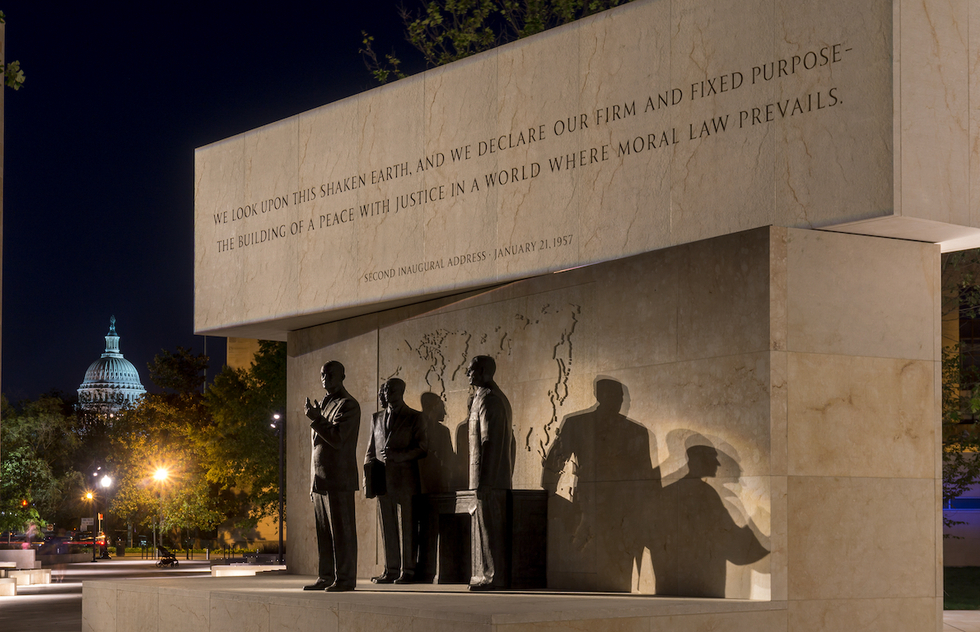This Frank Gehry–designed park just south of the Air and Space Museum honors the life and career of the 34th president and leader of the Allied forces during World War II.
The monument is straightforward yet powerful, a nod to the man it represents. As a five-star general during WWII, Eisenhower commanded the Allied invasion of Normandy on D-Day and helped ultimately defeat the Nazis. From there, he served two terms as president, promoting peace and diplomacy and bolstering American infrastructure. (The memorial’s location is significant, as it’s set in a plaza surrounded by the Department of Education, the Federal Aviation Administration, the Department of Health and Human Services, and Voice of America—all of which Eisenhower had an impact on.) Yet despite his grand stature in U.S. history, “Ike,” as he was known, never lost sight of his humility and sense of diplomacy. The new memorial captures these characteristics of the man it celebrates: Most features here are larger than life, but they blend into the surrounding cityscape and don’t dominate the skyline like some of the more prominent Washington monuments.
Start at the northwest corner of the 4-acre park, where you’ll see a statue of “Ike” as a youth in Kansas, sitting on a wall and staring off at the rest of the memorial, as if imagining his future. From there you’ll follow the pink limestone plaza to see highlights from Eisenhower’s career: a scene of him addressing the 101st Airborne Division before D-Day, which was designed based on a photograph of the event; and an Oval Office scene from his presidency. In this portrayal, Eisenhower stands in front of a bas relief map of the world, symbolizing his global diplomacy. Figures representing the military and civilians surround the president, a nod to his role of bridging and creating balance between the two groups after multiple wars. Behind all this is a massive, 450-foot long by 80-foot-tall screen that depicts a sketched relief of the cliffs of Normandy.
You can walk through the park in just a few minutes, but I recommend pulling up the audio guide on your phone (available at the park’s website or via QR code prompts at the site). Sit on the wide stone benches and listen to the stories of Ike’s life, including an interview with architect Frank Gehry about how the design came to life. A small visitor center onsite contains a gift shop, info booth, and restroom.






 About our rating system
About our rating system


